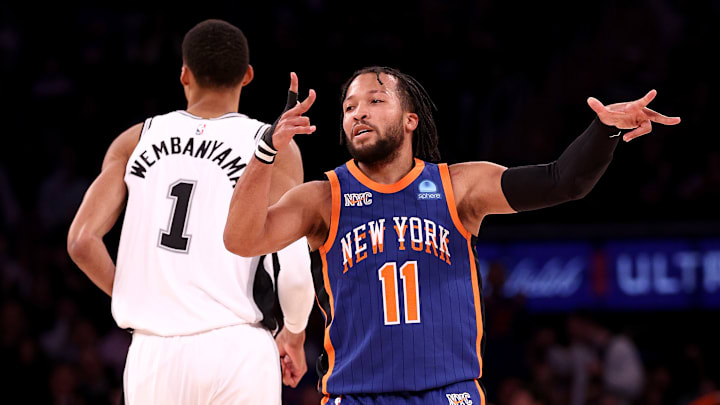The San Antonio Spurs were supposed to make noticeable strides on both ends of the floor after winning the Victor Wembanyama sweepstakes over the summer. But after eight games, this inexperienced ball club is 3-5 and in the middle of their first extended losing streak of the season, with three consecutive humiliating defeats under their belts.
While a couple of statement victories against the title-contending Phoenix Suns had Gregg Popovich and company looking well ahead of schedule at the outset of the second year of their full-throttle rebuild, they have come back to reality. Opponents have torn apart their discombobulated defense to score 125.9 points per game, and a tremendous chunk of the damage is from beyond the arc.
Before exploring the personnel-specific causes for issues, we should look at the numbers to thoroughly grasp the degree of their shortcomings. San Antonio has allowed a league-worst 25.3 wide-open threes per game, and teams are nailing those immaculate looks at 41.6%, one of the reasons the Spurs are losing the three-point line by an unsettling 111 points thus far.
San Antonio has allowed the most wide-open threes this season, and opponents are hitting those looks at 41.6% through eight games.
— Noah Magaro-George (@N_Magaro) November 10, 2023
Common denominator has been late rotations, over-helping on drives, a failure to recover to the perimeter, and a lack of communication. pic.twitter.com/8tJk5gOdQl
The Silver and Black have made it unmistakable that they want to operate under a no-middle scheme, which charges players with stopping as much dribble penetration down the center of the court as possible. Though that may sound simple enough, executing that mission is a tall order when you have multiple men that opposing players can exploit with quick rips on the perimeter.
Because lead ballhandlers and second-side slashers can sprint past heavy-footed defenders like Doug McDermott, Keldon Johnson, Makaki Branham, and Cedi Osman, it is easy to get two feet inside the paint to force collapses on demand from helpers who are one pass away. A byproduct of these recurring slipups is a roster filled with teammates who don't necessarily trust each other to handle rudimentary responsibilities.
These young Spurs are often late on basic rotations, overhelp on drives, fail to recover to shooters, and ball-watch. Perhaps their most glaring problem is a pronounced lack of communication on the hardwood. Their mistakes are all interconnected like suspects on a corkboard murder map, leaving a trail of confusion that snowballs into additional devastating breakdowns elsewhere.
We can point fingers at individuals and turn them into scapegoats, but the truth is everyone has contributed to this long-distance predicament. Fans may not want to accuse Victor Wembanyama or Jeremy Sochan for any of the disarray, but they are part of the problem. Their man-to-man defense
has mostly been fantastic, but even their switchability and versatility can't mask some of their less-than-stellar moments as team defenders.
San Antonio can turn things around and become respectable on this side of the ball, and it begins with talking and showing faith in the player standing next to you. The Spurs are the youngest squad in the NBA. Forming chemistry, learning fundamentals, and exercising discipline will take some time. This storied organization is still in the early stages of the Wembanyama era. There is no need to panic about their natural growing pains.
